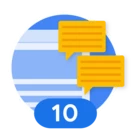Hi
Is there a solution to keep an active tracking of connector health. So that we know whenever a connector is not healthy. Lately we have experienced secret expiration with one of our connectors, and we came to know about it after significant delay as part of manual review exercise.








